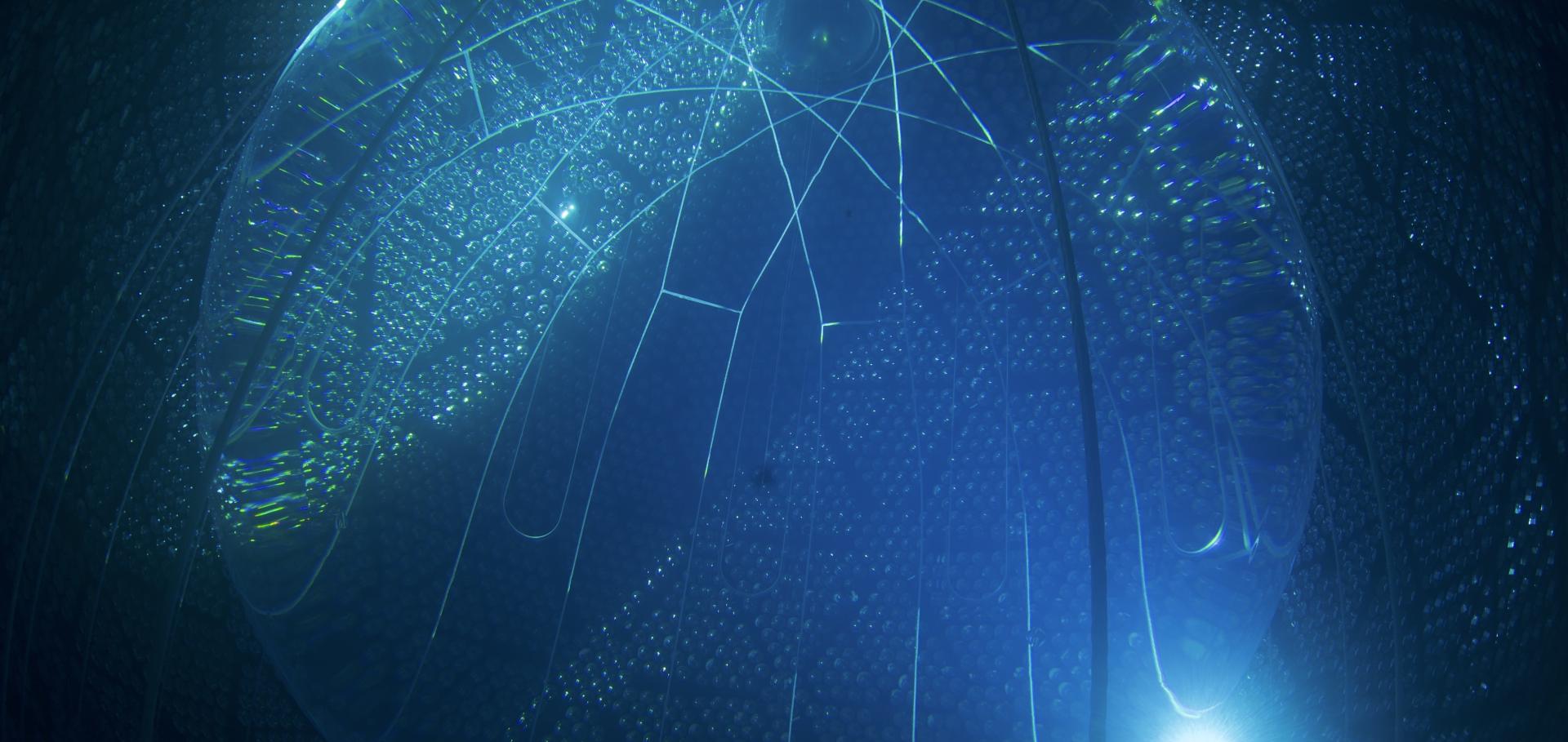Measurements of Higgs boson production and couplings in diboson final states with the ATLAS detector at the LHC
Physics Letters, Section B: Nuclear, Elementary Particle and High-Energy Physics 726:1-3 (2013) 88-119
Abstract:
Measurements are presented of production properties and couplings of the recently discovered Higgs boson using the decays into boson pairs, H→γγ, H→ZZ*→4ℓ and H→WW*→ℓνℓν. The results are based on the complete pp collision data sample recorded by the ATLAS experiment at the CERN Large Hadron Collider at centre-of-mass energies of s=7 TeV and s=8 TeV, corresponding to an integrated luminosity of about 25 fb-1. Evidence for Higgs boson production through vector-boson fusion is reported. Results of combined fits probing Higgs boson couplings to fermions and bosons, as well as anomalous contributions to loop-induced production and decay modes, are presented. All measurements are consistent with expectations for the Standard Model Higgs boson. © 2013 CERN.Performance of jet substructure techniques for large-R jets in proton-proton collisions at √s=7 TeV using the ATLAS detector
Journal of High Energy Physics 2013:9 (2013)
Abstract:
This paper presents the application of a variety of techniques to study jet substructure. The performance of various modified jet algorithms, or jet grooming techniques, for several jet types and event topologies is investigated for jets with transverse momentum larger than 300 GeV. Properties of jets subjected to the mass-drop filtering, trimming, and pruning algorithms are found to have a reduced sensitivity to multiple proton-proton interactions, are more stable at high luminosity and improve the physics potential of searches for heavy boosted objects. Studies of the expected discrimination power of jet mass and jet substructure observables in searches for new physics are also presented. Event samples enriched in boosted W and Z bosons and top-quark pairs are used to study both the individual jet invariant mass scales and the efficacy of algorithms to tag boosted hadronic objects. The analyses presented use the full 2011 ATLAS dataset, corresponding to an integrated luminosity of 4.7 ± 0.1 fb-1 from proton-proton collisions produced by the Large Hadron Collider at a centre-of-mass energy of √s=7 TeV. [Figure not available: see fulltext.] © 2013 Cern for the benefit of the ATLAS collaboration.Search for excited electrons and muons in √s=8 TeV proton-proton collisions with the ATLAS detector
New Journal of Physics 15 (2013)
Abstract:
The ATLAS detector at the Large Hadron Collider is used to search for excited electrons and excited muons in the channel pp → ℓℓ* → ℓℓγ, assuming that excited leptons are produced via contact interactions. The analysis is based on 13 fb-1 of pp collisions at a centre-of-mass energy of 8 TeV. No evidence for excited leptons is found, and a limit is set at the 95% credibility level on the cross section times branching ratio as a function of the excited-lepton mass mℓ*. For mℓ* 0.8 TeV, the respective upper limits on σB(ℓ* → ℓγ) are 0.75 and 0.90 fb for the e* and μ* searches. Limits on σB are converted into lower bounds on the compositeness scale Λ. In the special case where Λ = m ℓ*, excited-electron and excited-muon masses below 2.2 TeV are excluded. © CERN 2013.Evidence for the spin-0 nature of the Higgs boson using ATLAS data
Physics Letters, Section B: Nuclear, Elementary Particle and High-Energy Physics 726:1-3 (2013) 120-144
Abstract:
Studies of the spin and parity quantum numbers of the Higgs boson are presented, based on proton-proton collision data collected by the ATLAS experiment at the LHC. The Standard Model spin-parity JP=0+ hypothesis is compared with alternative hypotheses using the Higgs boson decays H→γγ, H→ZZ*→4ℓ and H→WW*→ℓνℓν, as well as the combination of these channels. The analysed dataset corresponds to an integrated luminosity of 20.7 fb-1 collected at a centre-of-mass energy of s=8TeV. For the H→ZZ*→4ℓ decay mode the dataset corresponding to an integrated luminosity of 4.6 fb-1 collected at s=7TeV is included. The data are compatible with the Standard Model JP=0+ quantum numbers for the Higgs boson, whereas all alternative hypotheses studied in this Letter, namely some specific JP=0-, 1+, 1-, 2+ models, are excluded at confidence levels above 97.8%. This exclusion holds independently of the assumptions on the coupling strengths to the Standard Model particles and in the case of the JP=2+ model, of the relative fractions of gluon-fusion and quark-antiquark production of the spin-2 particle. The data thus provide evidence for the spin-0 nature of the Higgs boson, with positive parity being strongly preferred. © 2013 CERN.Improved luminosity determination in pp collisions at √s =7 TeV using the ATLAS detector at the LHC
European Physical Journal C 73:8 (2013) 2-39


